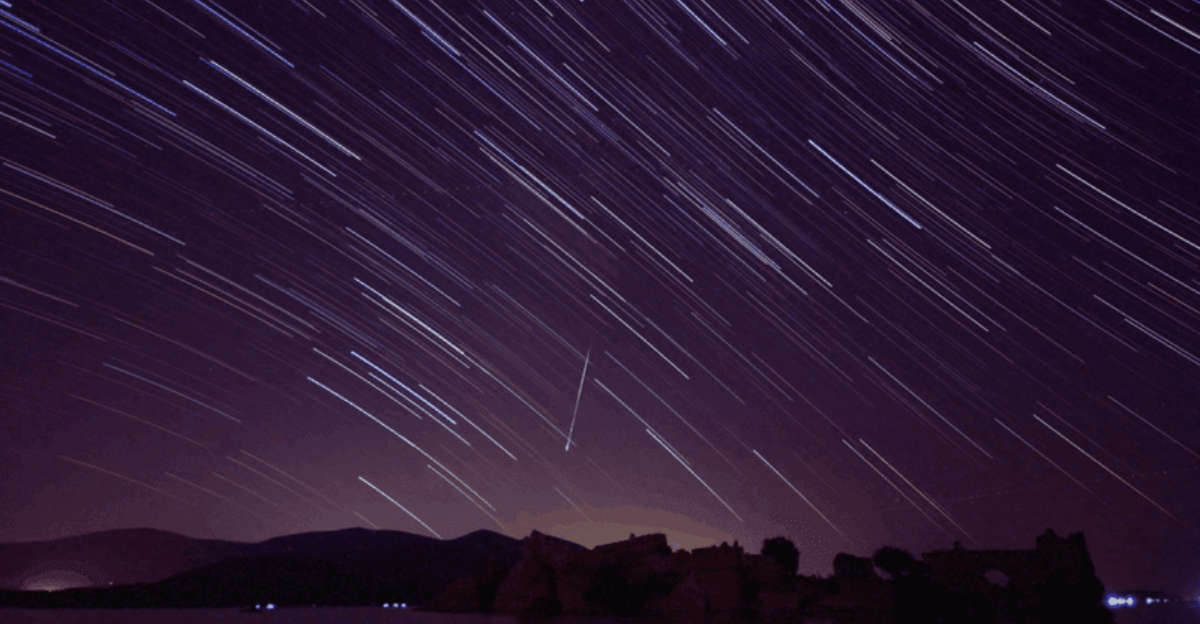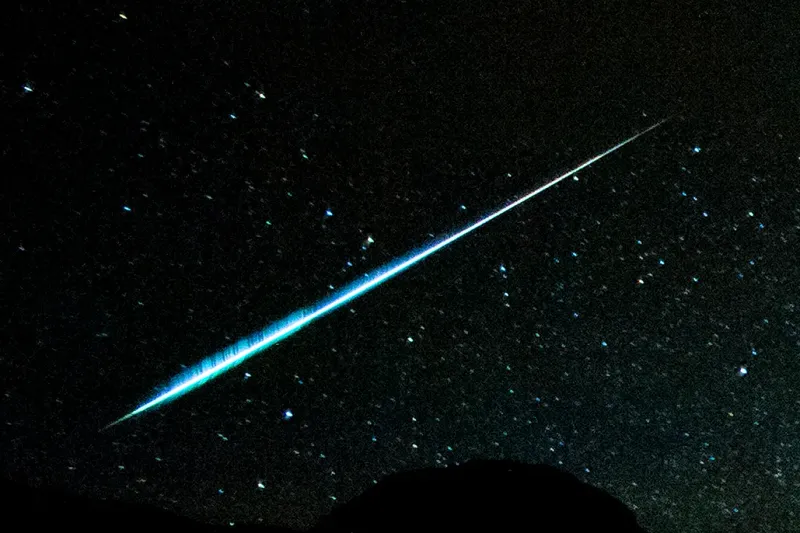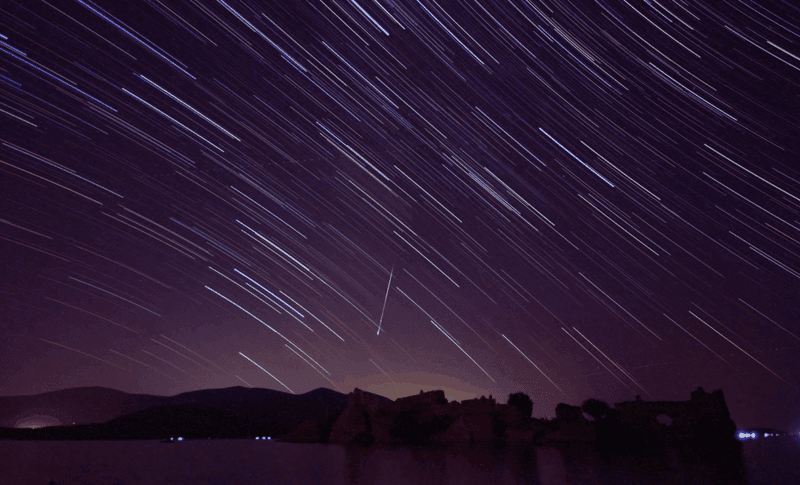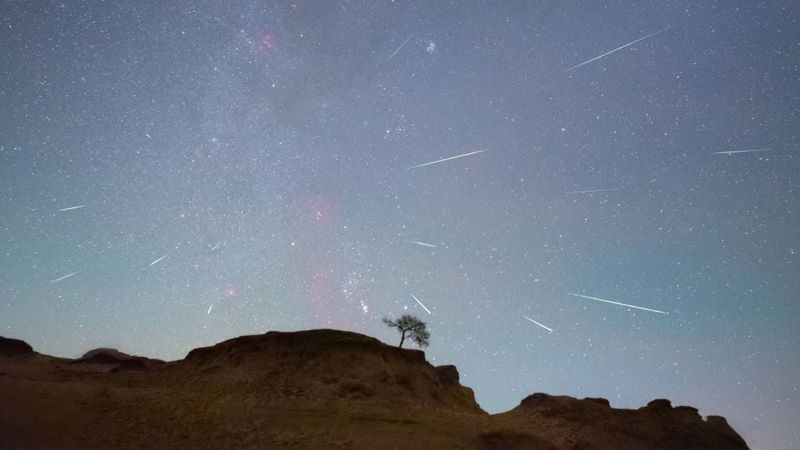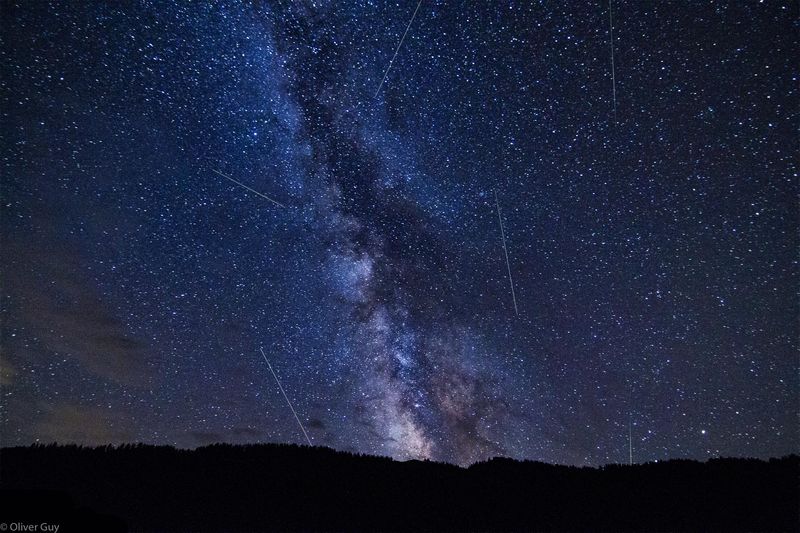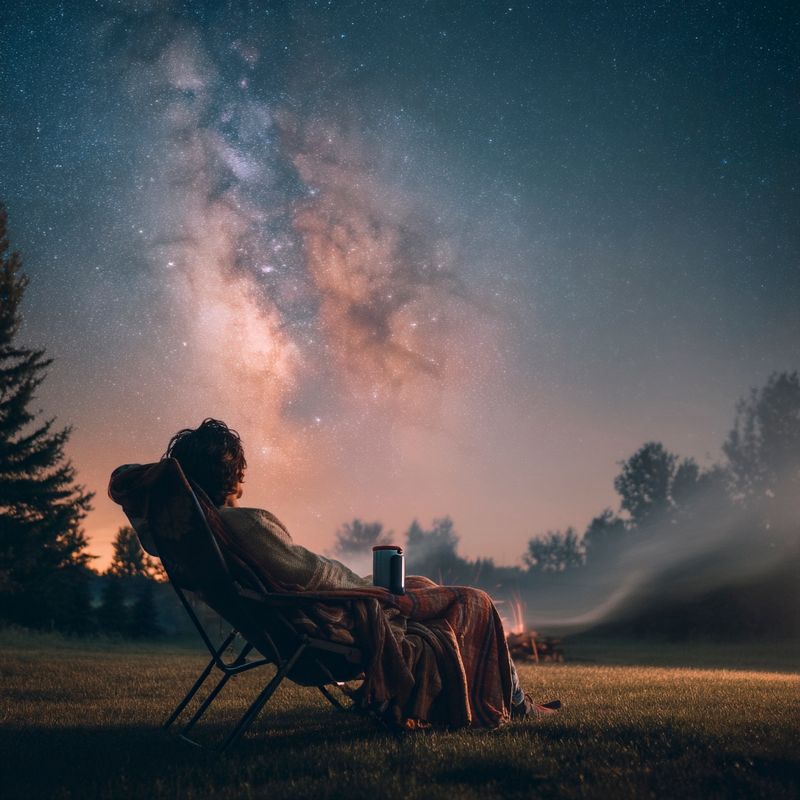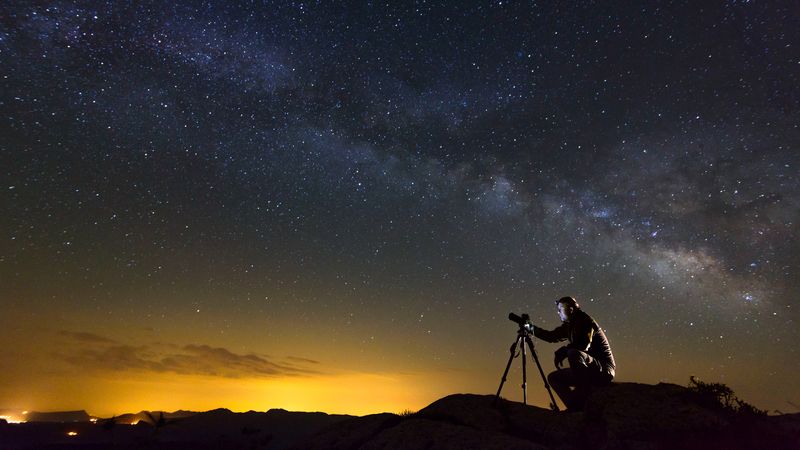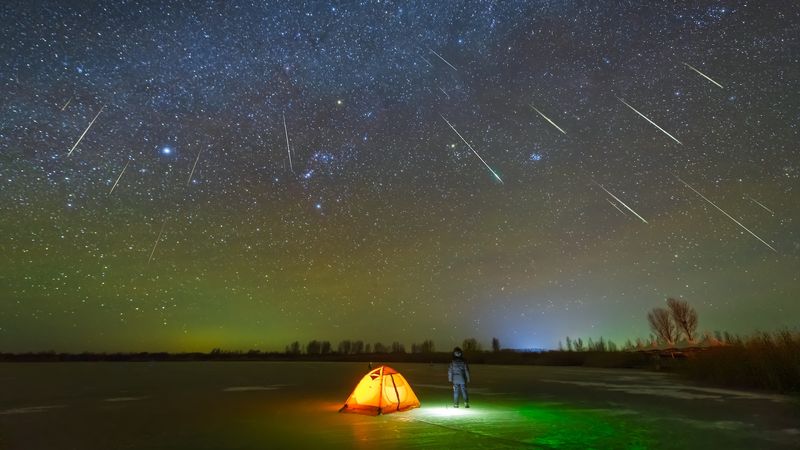October brings one of fall’s most reliable celestial shows—the Orionid meteor shower. This year, sky watchers have extra reason to celebrate because the peak falls on October 20-21, when the moon will be completely dark. Caused by dust from Halley’s Comet, these fast-moving meteors light up the night with brilliant streaks. Whether you’re a seasoned stargazer or just curious about the night sky, this is your chance to witness a cosmic spectacle without any special equipment.
What Makes the Orionids Special
Every autumn, Earth passes through a trail of debris left behind by Halley’s Comet, creating the Orionid meteor shower. These tiny particles slam into our atmosphere at incredible speeds—about 66 kilometers per second—making them some of the fastest meteors you can see. When they burn up, they create bright, quick flashes across the sky.
What sets the Orionids apart is their connection to one of history’s most famous comets. Halley’s Comet visits our inner solar system only once every 76 years, but it leaves behind a dusty trail that Earth encounters twice annually. The Orionids appear in October, while the Eta Aquarids show up in May—both born from the same cosmic parent.
Perfect Timing with a New Moon
Luck is on our side this year. The moon enters its new phase on October 21, meaning it won’t be visible in the night sky during the shower’s peak. This is a huge advantage for meteor watchers because even a sliver of moonlight can wash out fainter shooting stars.
Dark skies transform an average meteor shower into an unforgettable experience. Without lunar interference, even the dimmer meteors become visible, potentially doubling or tripling what you might see on a moonlit night. Astronomers estimate viewers could spot 10 to 20 meteors per hour under ideal conditions.
Mark your calendar for the overnight hours between October 20 and 21 for the absolute best viewing window.
Where and When to Look
Finding the Orionids is easier than you might think. The meteors appear to radiate from the constellation Orion, specifically near the bright red star Betelgeuse. However, you don’t need to stare directly at Orion—meteors can appear anywhere across the sky.
Timing matters more than direction. The best hours are after midnight through the pre-dawn period, typically between 2 AM and 5 AM. During these hours, your location on Earth is turning into the stream of comet debris, which increases the number of meteors you’ll see.
Face toward an open area of sky with minimal obstructions like trees or buildings. Let your eyes wander naturally rather than fixating on one spot.
Choosing Your Viewing Location
Light pollution is the meteor watcher’s biggest enemy. City lights, streetlamps, and even car headlights can dramatically reduce how many meteors you spot. Your best bet is to travel away from urban areas to a location with truly dark skies.
National parks, rural farmland, or designated dark-sky preserves offer excellent viewing opportunities. If you can’t escape the city entirely, try to find a spot on the outskirts where artificial lighting is minimal. Even a 20-minute drive can make a noticeable difference.
Safety comes first—choose a location you know well or visit during daylight hours beforehand. Bring a friend along, let someone know where you’re going, and watch for wildlife or uneven terrain in the dark.
What to Bring for Comfort
Comfort is key when you’re spending hours under the stars. October nights can get surprisingly chilly, especially in the pre-dawn hours, so dress in layers. Bring a warm jacket, hat, and gloves—you’ll thank yourself when temperatures drop.
A reclining lawn chair or thick blanket makes viewing much more pleasant than craning your neck upward. Lying flat on your back gives you the widest view of the sky and prevents neck strain. Pack a thermos with hot chocolate or coffee to stay warm from the inside out.
Leave your phone in your pocket or car. The bright screen ruins your night vision, which takes 20 to 30 minutes to fully develop. Red-filtered flashlights preserve your dark adaptation if you need light.
Photography Tips for Capturing Meteors
Capturing meteors on camera requires patience and the right setup. Start with a DSLR or mirrorless camera that allows manual settings. Mount it securely on a tripod—any movement will ruin your long exposures.
Use a wide-angle lens with a large aperture (f/2.8 or lower works best) to capture as much sky as possible. Set your ISO between 1600 and 3200, and try exposure times of 15 to 30 seconds. Take continuous shots throughout the night; you never know when a meteor will streak through your frame.
Point your camera toward a scenic foreground—silhouetted trees or hills add visual interest. Remember, meteor photography is a numbers game. The more exposures you take, the better your chances of catching that perfect shooting star.
Bonus Celestial Treats This Year
This October offers more than just the Orionids. Two newly discovered comets—Comet Lemmon and Comet SWAN—will also be at their brightest during the same period. This rare alignment means you could potentially see meteors and comets in one incredible night.
Comet Lemmon appears in the northwest sky near the Big Dipper and the bright star Arcturus. Meanwhile, Comet SWAN sits low in the southern sky below Altair. Both require binoculars or a small telescope for the best views, though they might be faintly visible to the naked eye under very dark conditions.
Experiencing multiple celestial events simultaneously is uncommon. Take advantage of this cosmic convergence to explore everything the October sky has to offer.
